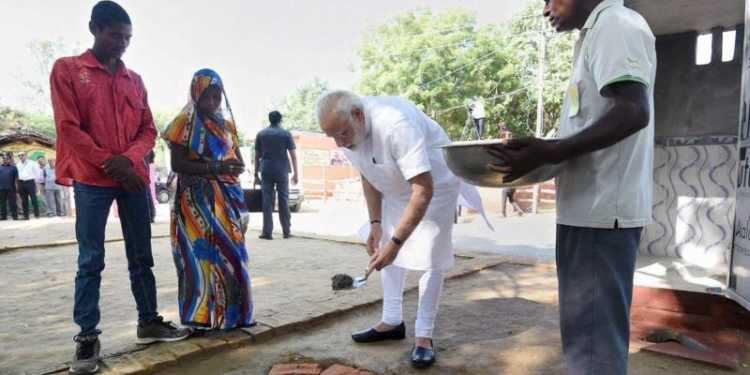For the first time in Indian history, there seems to be a discussion of such an aggressive nature regarding the performance of the ruling government. There is a polarisation of opinion with regards to the performance of the Modi government, and whether it has fulfilled its extensive promises. One area where there is bipartisan consensus from both sides of the debate is the area of sanitation and cleanliness. We explore these areas from an evidence-based approach, and try to ascertain how the massive campaign for Swachh Bharat Mission has worked on the ground.
There is nothing grandiose as such about an ambitious scheme like this, since many such schemes have been propped in various areas apart from sanitation by previous governments, with little to no avail despite large amounts of funding pumped into them. Perhaps the greatest hurdle the Swachh Bharat Mission faced was not the difficulty in literally cleaning up the nation, but the carefree mentality of the ordinary civilian. The average Indian, who is so accustomed to evaluating ‘cleanliness’ as brooming dirt out of their house into public places, does not think twice before littering in public areas. There has been a lack of sense of ownership of public areas, and people have not felt the inherent responsibility to keep it clean to improve their own standard of living. The statistics regarding the successfulness of the campaign show a significant change in the mentality of an average Indian.
When Swachh Bharat Mission was launched in October 2014, less than 40 percent of households in India were Open Defection Free (ODF), while as of now 85 percent of Indian households are ODF. The significant increase in the toilets built has been in the villages of India, which has gone up from 47,000 to 384,000 within the span of 4 years. As per the National Sample Survey Organization (NSSO), MOSPI data Seventeen states and Union Territories (UTs) are now ODF. Of the remaining 16, another three are almost ODF (>90%) and six are more than 85% ODF. Only seven states/UTs are lagging behind. Odisha is the worst off with only 56% sanitation coverage, followed by Bihar (57%), Puducherry (68%), Uttar Pradesh (72%), Tripura (75%) and Goa (76%). Now it is often accused that the government inflates the figures, therefore, an independent survey under the guidance of representatives of UNICEF and World Bank was carried out. The survey finds that 96% of the villages declared ODF were indeed ODF, and 77% of the households surveyed had toilets (consistent with the official estimate of 76% at the time of the survey). Of the people who had access to toilets, 93% were found to use them regularly, which is very close to an even higher estimate of 95% revealed.
As per report in the book of Naina Lal Kidwai ’s book Survive Or Sink, 22% of Indian cities are now ODF and 50% of all rural wards have 100% door-to-door solid waste collection. A million schools (91%) now have separate toilets for girls, up from 37% when the scheme was launched.
It must be noted that here that the biggest change this has brought about is the change in lifestyle for rural women and girls. The fact that a good proportion of sexual harassment and rape incidents happen when women and girls went the fields to defecate, means that not only do they get better sanitation, but are now more safer from sexual predators than they were before.
Sudipto Mundle, emeritus professor at the National Institute of Public Finance and Policy, questioned Secretary Iyer, who is in charge of the Grameen segment of Swachh Bharat Mission, and also responsible for coordination among all the departments dealing with Swachh Bharat components and matters cutting across these components. When Mr. Mundle asked him about the response in Non-BJP ruled states, Iyer surprsingly said that the response has been more than enthusiastic from opposition leaders and MLAs.
This is perhaps one of the biggest achievements of the scheme so far, that despite political differences, the campaign has been able to attain bi-partisan consensus on an issue that affects each and every Indian. This is why the Swachh Bharat Mission finds its place among the likes of the Green Revolution and the White Revolution in terms of a combined national effort both by opposition ruled states and the ordinary people the country.


































